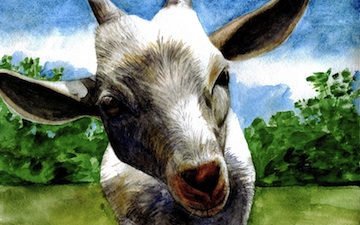For best results print the cards using the Firefox Browser
Cards
(QUICK LINKS: Decks | plants | mammals | birds | | reptiles | fish | cephalopoda | insects | microbe | events
( scientist | project | modifier | technique |)

Eastern Paradise Whydah
Vidua paradisaea



3 POINTS
• Vidua paradisaea has a FLIGHT of 2.
• Vidua paradisaea’s black tail is almost three times as long as its body.
Warm, Hot
Graphic by Teh-Aguaráteh-aguara.deviantart.com/
Photo by Tude e Joaowww.flickr.com/photos/55031801@N02/
The Long-tailed Paradise Whydah or Eastern Paradise Whydah, Vidua paradisaea, is a small brown sparrow-like bird of Eastern Africa, from east Sudan to south Angola. During the breeding season the male molts into breeding plumage that consists of a black head and back, rusty brown breast, bright yellow nape, and buffy white abdomen with broad, […] read more

Cockatiel
Nymphicus hollandicus



2 POINTS
• Nymphicus hollandicus has a FLIGHT of 2.
• Cockatiels are native to Australia.
Cool, Warm, Hot
Graphic by Renee LeComptewww.notonigon.com/
Photo by Sarah A. R. M.www.flickr.com/photos/sarahmontano/
The Cockatiel (Nymphicus hollandicus), also known as the Quarrion and the Weiro, is the smallest cockatoo endemic to Australia. They are prized as a household pet and companion parrot throughout the world and are relatively easy to breed. As a caged bird, cockatiels are second in popularity only to the Budgerigar.[2] Cockatiels are native to […] read more

Red Panda
Ailurus fulgens



5 POINTS
• Ailurus fulgens has a MOVE of 2.
• Red pandas have a wide range of vocalisations, the most peculiar of which is a ‘quack-snort.’
Cool, Warm
Graphic by Alexandria Neonakisalexneonakis.com/
Photo by Kelvin Blaskocommons.wikimedia.org/wiki/File:Red_Panda_NY.JPG
The red panda (Ailurus fulgens, or shining-cat), is a small arboreal mammal native to the eastern Himalayas and southwestern China.[2] It is the only species of the genus Ailurus. Slightly larger than a domestic cat, it has reddish-brown fur, a long, shaggy tail, and a waddling gait due to its shorter front legs. It feeds […] read more

Southern Carmine Bee-Eater
Merops nubicoides



7 POINTS
• Merops nubicoides has a FLIGHT of 2.
• Merops nubicoides is a highly sociable species, and can be found across sub-equatorial Africa.
Warm, Hot
Graphic by Teh-Aguaráteh-aguara.deviantart.com/
Photo by Tarique Sanifarm8.staticflickr.com/7142/6737971911_ebba99e3d2_o.jpg
The Southern Carmine Bee-eater (Merops nubicoides) (formerly Carmine Bee-eater) occurs across sub-equatorial Africa, ranging from KwaZulu-Natal and Namibia to Gabon, eastern Democratic Republic of the Congo and Kenya. This species, like other bee-eaters, is a richly coloured,striking bird, predominantly carmine in colouration, but with the crown and undertail coverts blue. Its usual habitat included low-altitude […] read more

Rosemary Beetle
Chrysolina americana



4 POINTS
• Chrysolina americana has a MOVE of 2.
• Chrysolina americana was first discovered in the United Kingdom in 1994.
Cool, Warm
Graphic by Claudia Hahnheliocyan.com/
Photo by Ombrosoparacloucyclewww.flickr.com/photos/30063276@N02/
Chrysolina americana is a type of beetle native to Southern Europe, despite the species name americana. Commonly known as the ‘Rosemary Beetle’ it feeds on rosemary and lavender. This species was first discovered living outdoors in the United Kingdom in 1994. By 2002 it had become widespread in the London area, and spreading rapidly throughout. Although it is susceptible to some pesticides, […] read more

Domestic Goat
Capra aegagrus hircus



3 POINTS
• Capra aegagrus hircus has a MOVE of 2
• There are over three hundred distinct breeds of domesticated goats worldwide.
Cool, Warm
Graphic by latyshoffalatyshoffa.deviantart.com/
Photo by Fir0002www.flagstaffotos.com.au/gallery23/main.php
The domestic goat (Capra aegagrus hircus) is a subspecies of goat domesticated from the wild goat of southwest Asia and Eastern Europe. The goat is a member of the Bovidae family and is closely related to the sheep as both are in the goat-antelope subfamily Caprinae. There are over three hundred distinct breeds of goat.[1] Female goats are referred to as does or nannies, intact males as bucks […] read more